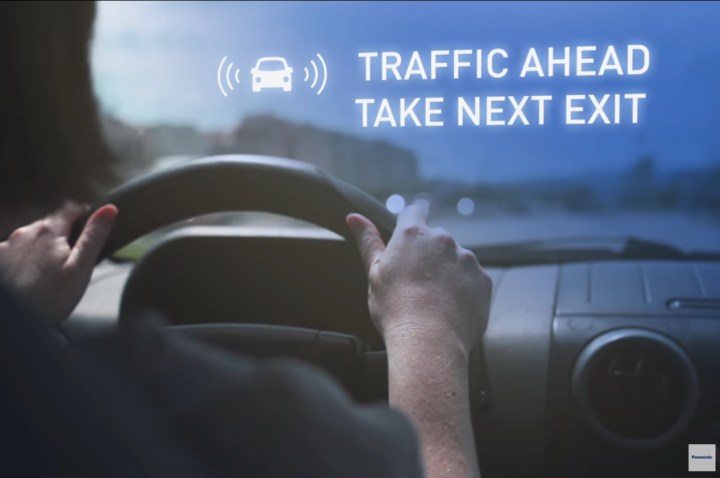
Called Skip-Gen, Panasonic’s infotainment platform now runs Oreo, the latest Android operating system. The update gives drivers access to Android Automotive applications that provides services like navigation and weather information. It also lets them control vehicle functions such as climate settings using the Google Assistant. All of this is accessible directly on the car’s built-in touchscreen and doesn’t require a phone.
With Amazon, Panasonic is working to embed Alexa voice into next-generation infotainment systems. Motorists will soon be able to access in-vehicle functions like HVAC, media, communication, and navigation by simply saying “Alexa” to wake up the digital assistant. Some capabilities will even work without a network connection, ensuring smart cars don’t suffer a lobotomy as soon as they venture off the grid.
Panasonic, like many other tech companies, envisions a world where shared cars drive themselves. Before that, we’ll see a growing number of semiautonomous cars hit the road as the technology trickles down from relatively expensive cars like the Audi A8 into more affordable models. Panasonic is bringing three interior designs named Smart Design Cockpit, Smart Vision Cockpit, and Living Space Autonomous Cabin to CES. They correspond to levels two, three, and five on the autonomy scale.
Photos haven’t been released yet. Panasonic says the most basic cockpit relies on four screens that display information for the driver and the passengers. The driver can, for example, request navigation information and real-time data about the car and its surroundings. The front passenger can watch a movie on Netflix, while the rear passengers can watch cartoons on the go. At the other end of the spectrum, the interior for level five cars offers four configurations called living room, business, relax, and entertainment.
“As ride- and car-sharing become more commonplace, passengers will be able to have their own individual, customized experience,” the company summed up in a statement.
Editors' Recommendations
- Amazon Alexa aims to streamline the EV charging experience
- Google is making Android devices work better together with expanded Fast Pairing
- Google Lens is getting Chrome integration to help you find out-of-stock products
- From Paris to NYC, Mobileye will bring self-driving cars to metropolises
- Mercedes-Benz’s new ‘Hyperscreen’ dashboard is a dazzling 56-inch OLED panel




